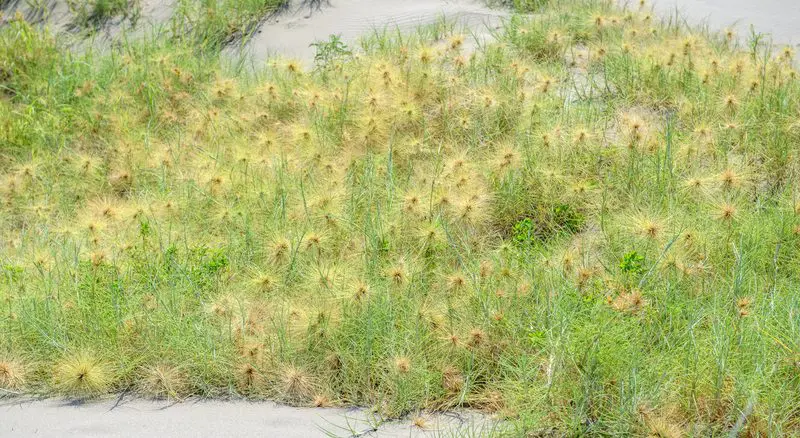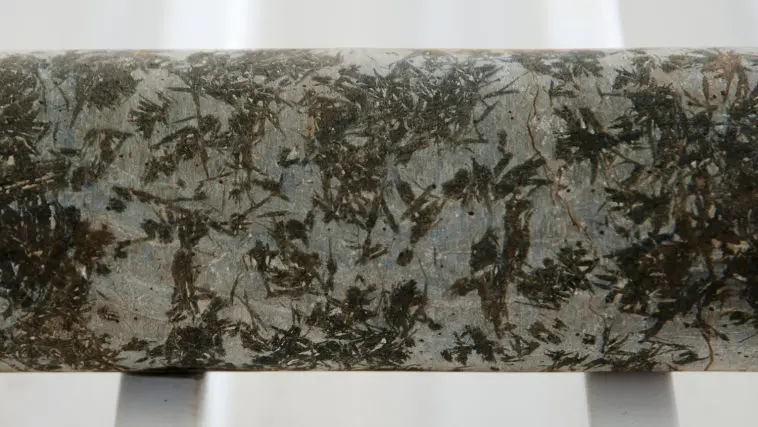[Originally published in 2014 as Sulfur dioxide emissions and nickel mineralisation early during Noah’s Flood]
A lecture by Prof Marco Fiorentini hosted by the University of Western Australia’s Centre for Exploration Targeting caught my attention. It’s entitled “Sulfur dioxide degassing during Archean and the genesis of komatiite-hosted nickel-sulfide mineralisation”.
Before I describe why I noticed it, let me briefly explain the background behind some terms in the title.
Komatiites are submarine lavas that erupted at high temperature (1600°C compared with 1100 to 1250°C for basalt lavas). Thus, they were extremely fluid, and flowed rapidly like water across the surface, compare with basaltic lava, which flows like honey. Komatiite was named after the Komati River in South Africa, which is its type locality.
Like basaltic lava, komatiite lava originated when part of the mantle rock inside the earth melted. The difference between komatiite and basalt is that, because of the higher temperatures involved, a greater proportion (around 50%) of the mantle rock melted producing the komatiite lava. As a result, komatiites are rich in magnesium oxide (MgO).
Sulfur dioxide (SO2) is one of the main gases emitted from volcanic eruptions. It’s poisonous with an irritating, pungent, and rotten smell. Inhalation can cause breathing difficulty, disease, and premature death. When released from volcanic eruptions it poses a hazard to people, animals, and vegetation. Local to the eruption, it can cause acid rain and air pollution. If large volumes of sulphur dioxide aerosols are injected into the stratosphere it can deplete the earth’s ozone layer and lower surface temperatures. (Volcanic Gases and Their Effects)

The minerals in komatiites display a distinctive pattern called a Spinifex fabric, where olivine crystals criss-cross in sheafs like Spinifex grass. This suggests the lava cooled very rapidly after it was extruded.
The Archean is regarded as the period from 2.5 billion to 4.0 billion years ago, within the evolutionary, long-age paradigm. Komatiites are mainly restricted to rocks of Archean ‘age’. Within evolutionary thinking, the restriction to the Archean is explained as:
- the early earth having a much higher temperature due to residual heat after the planet supposedly accreted, and
- a greater heat production due to more radioactive elements in the mantle.
In the supposed billions of years since the Archean, the mantle is said to have cooled by up to 500°C. But there are other explanations, as mentioned in the last paragraph.
What is the significance?
The lecture caught my attention because these sulphur dioxide emissions potentially give a clue to where Archean rocks should be assigned in a biblical geological framework. Some creation geologists assign the Archean to Creation Week (about 6,000 years ago within the biblical history). Others include them as early Flood rocks (about 4,500 years ago).
From the abstract of Prof Fiorentini’s lecture we read:
Komatiites are ancient submarine lavas that erupted over 2.5 billion years ago. These hot and highly turbulent flows entrained discrete sulfide liquids that concentrated nickel, copper and the platinum group elements locally to economic proportions. … measurements on sulfides from komatiites and local volcanogenic and sedimentary country rocks indicate that sulfur degassing during volcanism may have played a key role in the mineralizing process. … pervasive (>90%) sulfur loss from sulfide-saturated komatiite lavas, dominantly in the form of SO2 gas. This … had the potential to influence the geochemical evolution of the atmosphere and ocean on Archean Earth. Rapid sulfur degassing associated with such voluminous and cataclysmic eruptions was most likely a contributing factor for economic mineralization. [Emphasis added]
Notice the komatiite lavas are described as “hot and highly turbulent”, and as erupting underwater. Notice too that the volcanic eruptions are pictured as “voluminous and cataclysmic”, which is much more dramatic than the volcanic eruptions that are occurring today. And finally, the abstract says that the sulphur gasses released had the potential to significantly alter the atmosphere.
Conclusion
According to the historical record in Genesis, six times during Creation Week, the creation was described as “good” (Genesis 1: 4,10,12,18,21,25). And at the end of the sixth day, when creation was finished, God described the whole of creation as “very good” (v. 31).
Sulfur dioxide degassing into the atmosphere from exceptionally hot, voluminous, and cataclysmic komatiite lavas does not impress me as being “very good”. Consequently, I am not keen to assign these violent, toxic volcanic eruptions to Creation Week.
Rather, I think it is more likely that they erupted early during the Flood. In that case, it suggests that exceptional heating within the earth itself preceded the initiation of the Flood, when “all the springs of the great deep burst forth.” (Genesis 7:11)
Reference
1. Alex Strekeisen, komatiite.







